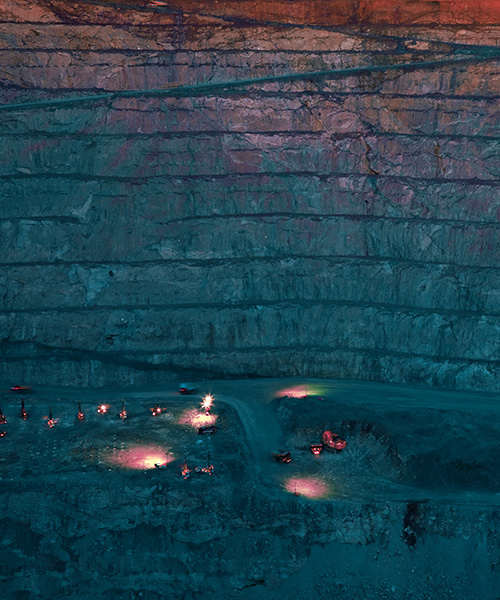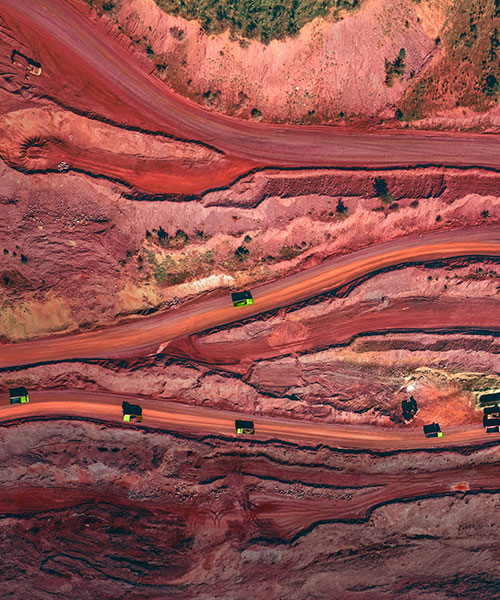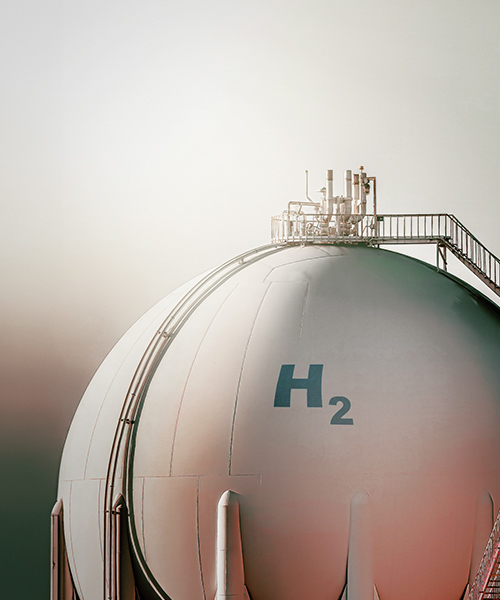July 21, 2021 • 5 min read
What role can power, chemicals and digital play in net zero mining?
Why technologies from other industries are the key to sustainable mining at scale
The mining industry and the energy transition go hand in hand. The move to lower carbon technologies such as batteries, microgrids, wind turbines and solar panels depends on mined and processed materials such as copper, lithium, graphite, iron ore and aluminium.
However, the industry is responsible for a significant portion of greenhouse gas emissions globally. And miners face growing pressure to follow through on their emissions reduction targets.
“Miners are making commitments to transform their operations by addressing their decarbonization and water challenges, and investing in energy transition materials,” says Sarah Callil, Director Growth and Innovation, Mining, Minerals and Metals. “There is an urgency to act and deliver sustainable solutions that meet the increasing demand for the metals and minerals needed over the coming decades.”
So, how can miners decarbonize their operations?
Invest in energy efficiency
The logic behind energy efficiency is to save every joule of energy.
An energy efficiency assessment looks at ways miners can streamline their energy use across their entire operations. These can be as small as switching to more energy efficient light bulbs – or as large as scheduling peak operations around low cost energy times.
It can also involve being smarter with the way energy is used, including changes to operations or processes to incorporate more energy efficient drives or pneumatic or conveying systems.
“The first step is always to do more with less energy, which often has direct emissions savings,” explains Dr Paul Ebert, Director, Sustainability and Energy Transition. “However, the key for miners is to take a long term view and identify ways to create energy efficiency and ultimately decarbonize their operations, while reducing operational expenditure where possible.”
Switch to lower carbon energy sources
As the cost of renewable energy falls, miners can gain another quick win by evaluating the sources of their energy and identifying opportunities to convert to low-cost renewable options
“Displacing fossil energy sources with lower emissions options like renewable energy can be as straightforward as changing energy provider,” says Ebert. “But it can be more complex for remote operations that aren’t connected to the grid, or when integrating a behind-the-meter system, such as a solar farm or microgrid.”
For some, it may be commercially viable to investigate opportunities to build, own and operate their own renewable power assets. Or strike a power purchase arrangement with a third party.
“Choosing the right option depends on assessing the risks involved and considering the energy supply options available that’s best for the business,” says Ebert. “Forward thinking organizations are contemplating how they may take this idea one step further. They’re considering opportunities for utilizing that power, including supplying energy products to other companies or new markets.”
Get power reliability from a distributed energy
Power outages can cost millions of dollars in lost production. As miners look to decarbonize their energy supply with renewable sources, they also need to consider energy resiliency. This includes controlling how they source and use energy.
That’s where distributed energy systems come in.
“Distributed energy systems optimize energy supply for particular circumstances in a mine operation,” explains Ebert. “The solution can include a number of different generation technologies such as energy storage and even renewable hydrogen. This can result in higher energy resiliency and the potential to get better commercial outcomes.”
The biggest benefit of distributed energy systems is that miners can have better control of their energy destiny.
“Not only do they have power from cleaner sources, but it’s reliable and they can decide when, where and how they’re going to use it,” says Callil. “And many combinations are possible. We have one customer who’s pursuing a distributed energy solution that retains a grid connection. This means they can leverage the value and security of self-generation, with the added benefits of a larger market.”
Displace diesel with electricity or hydrogen powered fleets
In the pursuit of lower carbon solutions and an adequate return on investment, renewable hydrogen could be an attractive option for miners.
“Once a renewable energy source has been established, miners can start to look for other opportunities to use across their operations,” says Ebert. “This can include electrifying mining processes or producing renewable hydrogen, which can displace diesel in mine vehicles and be used to produce renewable fuels.”
From drilling rigs and large trucks to bucket excavators and loaders, displacing diesel can remove up to 40 percent of a mine site’s emissions. But it requires a staged approach to reduce, replace and eliminate this fuel source completely.
“By electrifying their mining fleet and equipment with renewable energy sources, miners can not only reduce the risk of diesel price volatility and logistical challenges, but also their carbon emissions,” explains Callil.
Use digital to transition faster
The scale and pace of change to meet net zero can only be achieved with digital technologies. One of many examples is using artificial intelligence to predict future outputs of wind and solar plants. This allows for operational decisions that optimize the role of renewables.
“Integrating distributed energy technologies needs real-time oversight of the mining operation and energy sources, including predictions of the renewable plant output,” says Ebert. “With technologies like machine learning and artificial intelligence, it’s possible to optimize the design and operation of these systems. This builds confidence in the supply and prevents unnecessary capital expenditure.”
This means less money needs to be spent on energy storage, as the digital technology closely matches supply and demand, removing operational risk.
“This becomes valuable when these systems have grid connections, as the technology can make real-time decisions about where the energy flows,” explains Ebert. “For example, the predictive platform may choose to take energy from the grid or export energy to the grid, depending on the market pricing and status of the mine load.”
Build a roadmap to a sustainable future
Decarbonization requires an investment of time and money. But the window of opportunity is closing. Projections show that if we keep operating the way we are today, we’ll fail to meet our net zero targets.
“We’re starting to see mining supply chains looking for products with lower embedded emissions,” says Ebert. “The days of simply using whatever energy supply option is at hand are disappearing. The good news is, it’s possible for miners to build solutions that achieve lower emissions products.”
Callil agrees. “Lower emissions technologies and their cost are critical factors in making investment decisions. And they’re both shifting rapidly. We’re partnering with miners to develop solutions that consider best fit pathways to achieve their net zero vision. We create a roadmap so that investment decisions today – whether in data, technology or people – can be scaled up as the technology matures.”
2050 is not a destination, it's a journey
To achieve our global net zero ambitions, we need the mining industry. And while many operators have started their decarbonization journeys, the industry is facing what may seem like insurmountable challenges.
“The key is to keep an open mind to the solutions emerging across a broad range of industries, such as oil and gas, power, and chemicals,” says Ebert.
“We need to move to lower carbon technologies. Use low emissions energy. And we need to do it all while maintaining increased production to supply the building blocks of a sustainable future.
“There’s no single solution. We must consider every option.
“The time for change is not 2050. The time for change is now.”



